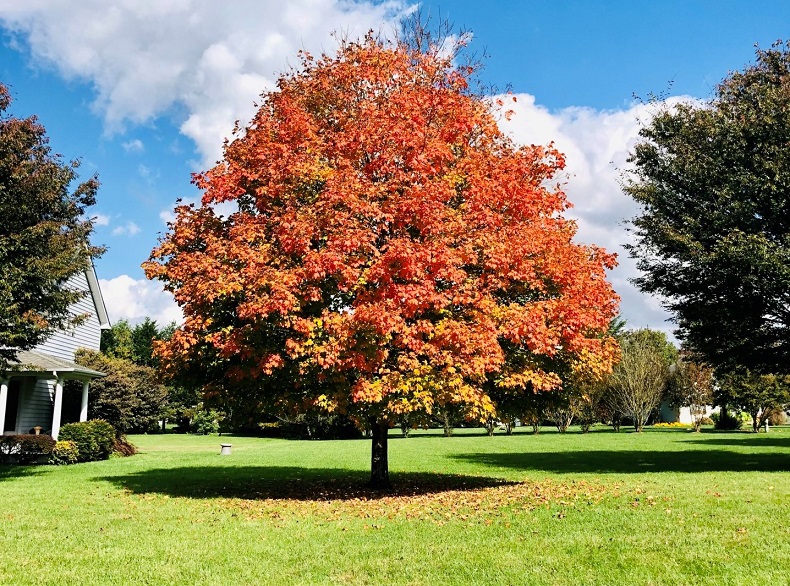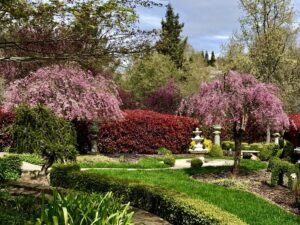Ornamental trees are famous for their fragrant and blooming flowers, vibrant leaves, and delicious fruit. This pleasing appearance makes them a necessity in your landscape. However, they require proper care throughout the year so that they can thrive and make your yard look colorful and beautiful.
Your ornamental trees need fertilizing in the first season after transplanting. However, sometimes it is not necessary to keep fertilizing your older trees too often. One light application per season after spring is often enough to last the whole year.
Remember that young trees need more fertilization to keep them growing and developing throughout the seasons. Slow-release fertilizer is the best option to use in the late fall, so it will not wash off through the winter rains. The quick-release fertilizer can be most favorable if applied during springtime before new growth begins.
Keep reading for more useful tips on fertilizing your ornamental trees.
Why Is It Important To Fertilize Ornamental Trees?
Similar to other plants, ornamental trees can also suffer from mineral deficiencies. Thus, they must receive the nutrients accordingly in order to develop and thrive. Remember that the nutrients feed the soil and the soil nourishes the trees. If your soil is not replenished with nutrients through fertilization, your plants will deteriorate over time.
However, you need to be careful not to overdo it. Trees with a small diameter can benefit from fertilization to help them grow strong trunks. Also, the grown, mature trees that show unhealthy signs like fewer or yellowish leaves and small twigs, indicating a problem with nutrient absorption, will definitely benefit from more fertilization.
In particular, it is essential to examine other factors that could be causing poor health of your ornamental tree, and to analyze the symptoms. Problems like poor drainage and pests will affect the appearance of the tree. It is essential to rule out all issues before settling on the type of fertilizer.
If lacking in important nutrients, the ornamental tree will also look stunted. The tree will not grow as tall as you desire or even provide enough shade. The lack of nutrients also affects the growth of the tree roots. Prolonged periods without fertilization can damage the roots, affecting the plant’s ability to hold on to the soil.
When Should Ornamental Trees Be Fertilized?
Young ornamental trees must get all the nutrients from the soil as they grow. During their first three years of growth, the young trees need constant fertilization throughout the seasons.
Trees that are newly planted will benefit from light fertilization applied in the first growing season after they’ve been transplanted. However, you may stop applying the fertilizer regularly once they reach the height and size you want.
As the tree gets older and stops growing, it will need less and less fertilization to stay healthy. But still, a bit of fertilizer will be necessary over the course of the year.
The best time to fertilize your ornamental trees is in the late fall, after the growing season and after all the leaves have dropped. Tree roots will continue to take up nutrients and grow even in the cold weather. You may also wait to fertilize in early spring before the growth starts. Just make sure the soil is not frozen.
However, it is best to apply fertilizer in the fall, as by this time the trees are already used to getting a constant flow of slow-release fertilizer. The received nutrients will help your plant recover from the growing season and make it ready for the next season.
Fall treatment with high-quality slow-release fertilizer is also necessary to help your trees recover from the heat stress brought by the scorching temperatures of the summer.
Can You Over Fertilize An Ornamental Tree?
It is possible to over fertilize your ornamental tree. When applied excessively, fertilizers can negatively affect beneficial microorganisms in the soil and the trees themselves. Over-fertilization also lowers the soil pH level, which creates an overly acidic environment that limits the availability of nutrients to the plants.
Applying too much fertilizer can not only harm it but can actually kill the tree. For example, when you apply high levels of quick-release nitrogen to the soil, it can burn up the plant roots. Thus, it is crucial to keep the proportions in check. Following recommended portions can also help a long way in ensuring that you don’t overdo it.
If the tree is growing in an area around a fertilized lawn, you can use smaller amounts as the tree will absorb the nutrients from the lawn as well. A level teaspoon is enough for a newly planted tree the size of a one-gallon pot.
Only fertilize the trees when you’re certain they need the nutrients. Filling your soil with too much fertilizer of one kind can poison the soil or lead to excess salt in the soil, disturbing its pH balance. If you are not sure of what amount to use, have your soil tested in a lab to find out what nutrients your soil needs, and what type and quantity of fertilizer to use.
What To Fertilize Your Ornamental Trees With?
These days, there are so many different types of fertilizer available on the market. But the fertilizer required will depend on the soil you have and the nutrients present in the soil. Whether you choose a slow-release or a quick-release fertilizer, your selection should be guided by what you aim to achieve and the time it will be applied.
The slow-release fertilizer will continuously feed your trees for up to 6 months and keep them growing, healthy, and happy with a mix of nutrients that will provide just what they need.
Nitrogen, Phosphorous, and Potassium are the main components, known as macronutrients, found in plant fertilizers. Nitrogen is essential for the growth, development, and reproduction of trees.
Phosphorus stimulates the development of plant roots, improves flowers and seed production, increases stem strength, improves plant quality and boosts its resistance to disease.
Potassium also helps with the growth and reproduction of trees, it regulates carbon dioxide uptake, activates many growth-related enzymes, improves drought resistance, and increases root growth.
Other micronutrients often added to the fertilizer include magnesium, iron, zinc, and calcium, to name but a few.
You can use a home test kit to determine the type and amount of fertilizer you need for your soil type. You can get a fertilizer with a blend of the three main micronutrients with 12-4-8, with Nitrogen being the largest proportion, 8 percent Potassium, and 4 percent Phosphorous. All fertilizer brands provide this information on the back of the bag.
Small ornamental trees that are less than 4 feet tall should not receive more than 1 tablespoon of 12-16 percent Nitrogen fertilizer, applied 2 or 3 times in their first growing season. Larger trees can receive more, and will benefit from 3 or 4 tablespoons of 12-16 percent Nitrogen fertilizer.
If you need help with the fertilization of your ornamental trees, Guaranteed Green offers a customized tree care program to help you protect the health of the different tree species you have in your Atlanta yard.
For the optimal development and health of trees, we use high-quality fertilizers with macronutrients, with seven applications a year, which provide protection against diseases and harmful pests. So give your trees a boost and call us today at (770) 599-2774 to learn more about our tree and shrub care services and schedule an appointment.





